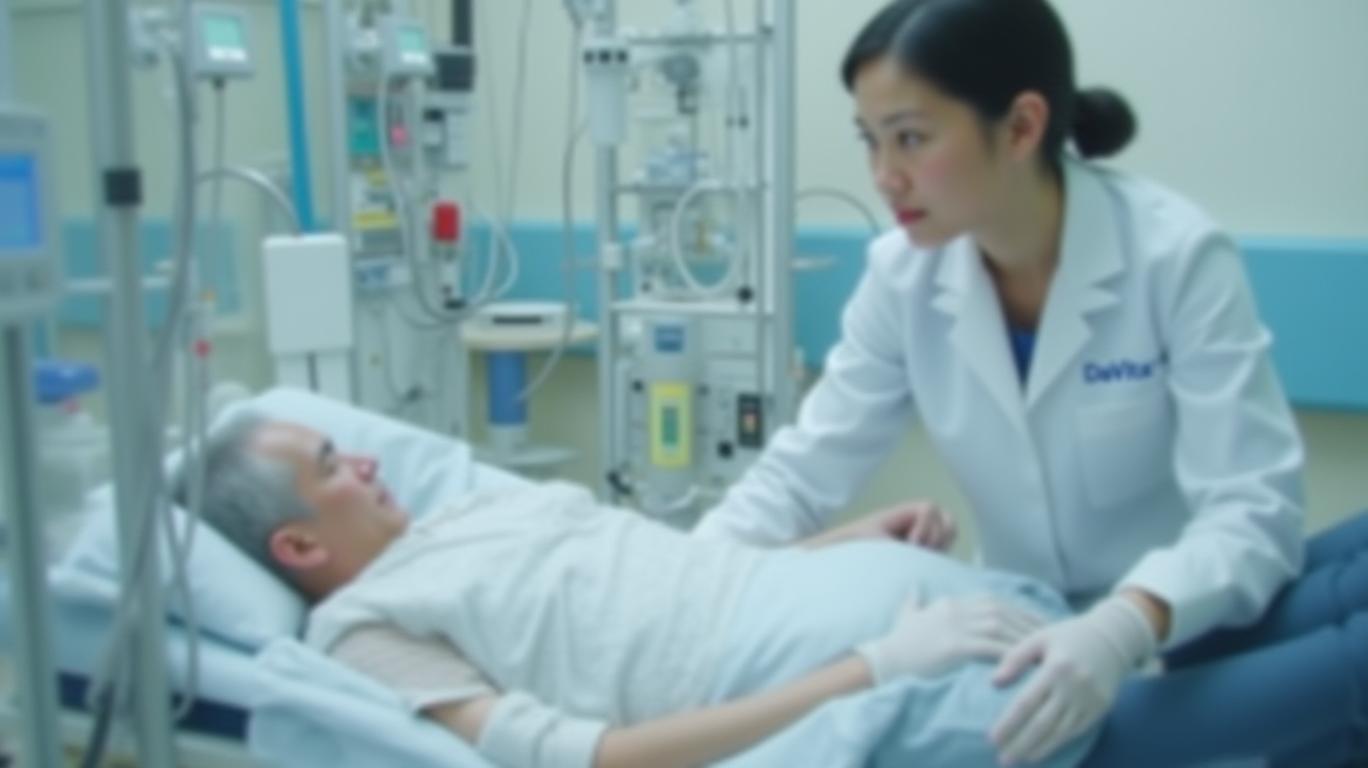DaVita’s Undervalued Entry Point Amid Stable Dialysis Demand
The healthcare sector has been a rollercoaster in 2025, with investors penalizing stocks over short-term missteps while overlooking long-term structural tailwinds. Nowhere is this dynamic clearer than at
(DVA), where a post-earnings flat stock price has created a rare buying opportunity. Beneath the surface of a modest Q1 2025 earnings miss lies a company positioned to capitalize on stable dialysis demand, Medicare Advantage tailwinds, and a 25-year track record of operational resilience. For investors willing to look past near-term noise, DVA offers a compelling entry point at current levels.Earnings Recap: Revenue Beats, Margin Pressures, and Strategic Focus
DaVita’s Q1 2025 results highlighted a familiar paradox: revenue growth (+5% year-over-year to $3.22B) beat estimates, yet adjusted EPS ($2.00) narrowly missed consensus. The flat stock price post-earnings reflects Wall Street’s focus on the EPS miss and margin compression (13.6% operating margin vs. 15.8% in 2024). But this narrow lens overlooks three critical positives:
- Free Cash Flow Turnaround: While Q1 free cash flow was negative $45M, management reaffirmed its full-year guidance of $1.0–$1.25B, driven by cost controls and Medicare rate hikes.
- Integrated Kidney Care (IKC) Momentum: IKC now covers 62,100 patients, representing $5.2B in annualized medical spend. This value-based care model—central to DaVita’s 25th-anniversary strategy—reduces costs for insurers while boosting long-term patient engagement.
- Revenue Cycle Improvements: Higher revenue per treatment (+$15.60 year-over-year to $400.14) reflects success in billing efficiency and Medicare reimbursement reforms, such as the inclusion of phosphate binders in ESRD payment systems.
Why the Dip Is Temporary: Stable Dialysis Demand and Medicare Tailwinds
The market’s focus on Q1 misses ignores two structural advantages:
1. Inelastic Dialysis Demand
Chronic kidney disease (CKD) affects 37 million Americans, with 700,000 requiring dialysis annually. This patient population is growing as diabetes and hypertension rates rise. DaVita’s 282,000 patients represent 40% of the U.S. outpatient dialysis market—a position underpinned by economies of scale and geographic reach.

2. Medicare Advantage (MA) Growth
Medicare Advantage plans now cover 48% of seniors, up from 37% in 2019. These plans incentivize providers to reduce hospitalizations and improve outcomes—a direct benefit to DaVita’s IKC model. CMS’s proposed 2025 ESRD payment rule, which includes a 2.1% reimbursement increase, further strengthens the company’s top-line visibility.
Margin Pressures Are Manageable
Bearish concerns center on rising patient care costs (+$16.64 per treatment year-over-year) and the $35M operating loss in IKC. Yet these challenges are temporary:
- Labor Costs: While labor accounts for 40% of dialysis expenses, automation and AI-driven scheduling tools—already piloted in 100+ centers—are reducing waste.
- Supply Chain: Hurricane-related disruptions in Q1 2025 are easing, with Baxter’s PD solution production resuming. Management expects supply chain costs to normalize in 2026.
Valuation: A Deep-Value Play in Healthcare
DaVita trades at 13.3x 2025E EPS, a 50% discount to its five-year average P/E of 26.7x and well below peers like Fresenius (FMS) at 16.8x. The stock’s 9.7% one-year price gain also lags the S&P 500’s 5.4% rise, despite its superior cash flow generation.
Analysts’ average 12-month price target of $169.14 implies a 17% upside, while GuruFocus’s “undervalued” rating (GF Value of $135.78) suggests further catalysts could unlock value.
Risks: Navigating Headwinds
- Reimbursement Uncertainty: CMS’s final ESRD rule could reduce payments if utilization metrics fall short.
- IKC Execution: Scaling IKC to profitability requires flawless integration of primary care and dialysis services.
Conclusion: A High-Conviction Buy at $143
DaVita’s Q1 stumble was a paper cut in the context of its 25-year growth story. With stable demand, Medicare tailwinds, and a $1.1B free cash flow runway, this is a company primed to outperform once operational hiccups subside. The flat post-earnings price creates a rare entry point to own a healthcare leader at a deep-value multiple.
Investors should act now—before the market realizes that DVA’s fundamentals are far stronger than its current price suggests.

Comments
No comments yet